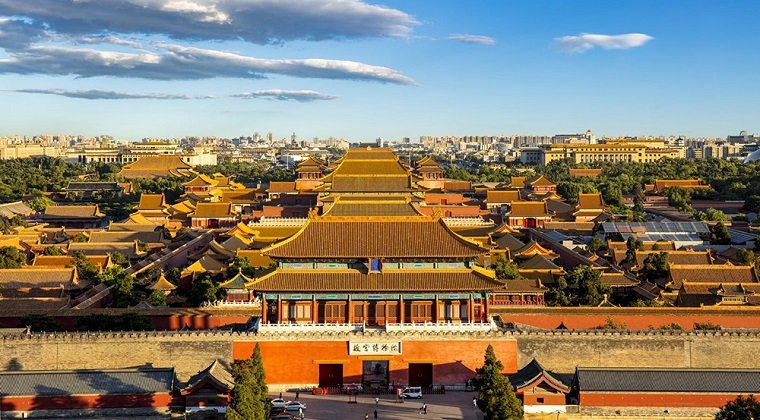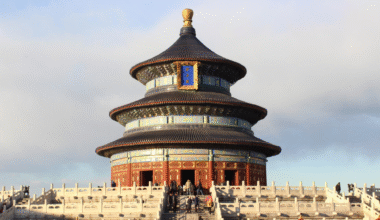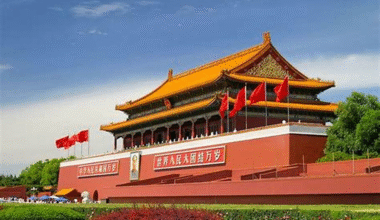The Forbidden City, also known as the Imperial Palace, is situated at the very heart of Beijing.It served as the imperial residence for the emperors of the Ming and Qing dynasties and stands as the largest and best-preserved ancient palace complex in the world.
More than a mere architectural masterpiece, the Forbidden City embodies the pinnacle of traditional Chinese palace culture and architectural art.It is not only a paramount symbol of Chinese civilization but also a vital component of the world’s cultural heritage.The name “Forbidden City” derives from the ancient Chinese astronomical concept of the “Purple Forbidden Enclosure” (Ziwei Yuan), symbolizing the supreme authority and divine mandate of the emperor.
Spanning nearly five centuries through the Ming and Qing dynasties, the Forbidden City has borne witness to countless historical events, encapsulating both the glory and the secrets of imperial rule.Following the fall of the Qing dynasty in 1912, the palace ceased functioning as the emperor’s residence and was transformed into a cultural sanctuary for the preservation and transmission of Chinese heritage.
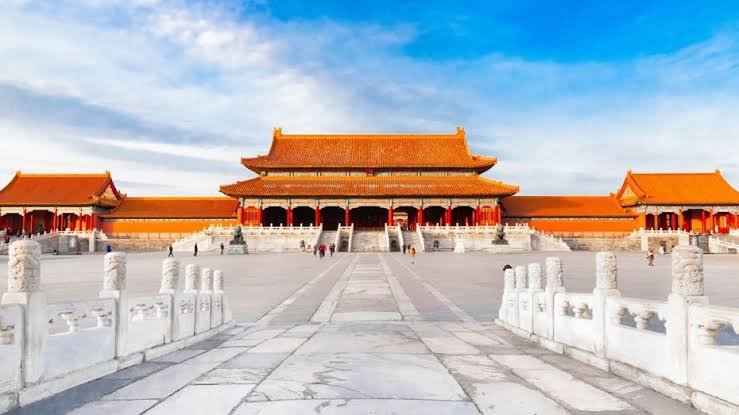
Historical Background
The construction of the Forbidden City began in the fourth year of the Yongle reign of the Ming Dynasty (1406 AD) and was completed in 1420 after 14 years of intensive labor involving hundreds of thousands of artisans and workers.

Upon its completion, it became the imperial residence and political center of China, housing 24 emperors from the Ming and Qing dynasties over nearly five centuries. The palace complex witnessed the rise and fall of dynasties, the consolidation of imperial power, and the evolution of Chinese political and cultural life.
The name “Forbidden City” (紫禁城) is deeply rooted in ancient Chinese cosmology. “Zi” (purple) refers to the “Purple Star Enclosure” (紫微垣), the celestial region surrounding the North Star, which was traditionally believed to be the seat of the Heavenly Emperor.
As such, the palace on earth mirrored this celestial domain, symbolizing the divine nature of the emperor’s rule. The term “Jin” (forbidden) underscores the exclusivity and sanctity of the imperial space—unauthorized entry was strictly prohibited.
Architecturally, the Forbidden City was designed with extraordinary precision and symbolism. It adheres strictly to the principles of axial symmetry, with all major structures aligned along a north-south central axis. This arrangement was not merely aesthetic but ideological: it reflected Confucian notions of social hierarchy and cosmic order.

The spatial hierarchy of the palace—from the outer court used for state ceremonies to the inner court reserved for the imperial family—illustrates the deep entwinement of architecture, ritual, and imperial authority. The philosophical concept of “Heaven and Man in unity” (天人合一) is embodied in the harmonious balance of space, function, and symbolism within the palace grounds.
Following the fall of the Qing dynasty in 1912 and the abdication of the last emperor, Puyi, the Forbidden City ceased to function as a royal residence. However, rather than fading into obscurity, it was gradually reimagined as a national cultural treasure. In 1925, the Palace Museum (故宫博物院) was officially established within its walls, marking a significant transition from imperial exclusivity to public cultural preservation.

The museum opened its gates to the people of China and the world, transforming the palace from a symbol of dynastic rule into a custodian of cultural memory, housing over 1.8 million precious artifacts, including paintings, calligraphy, ceramics, jade, bronze, and imperial archives.

Today, the Forbidden City stands not only as an architectural marvel but as a living testimony to the complexities of Chinese history. It represents the intersection of power, philosophy, art, and society, offering invaluable insights into the dynastic civilizations that shaped East Asia and left an enduring legacy for the world.
Major Areas within the Forbidden City
Covering approximately 720,000 square meters, the Forbidden City comprises nearly 980 palace buildings and over 8,700 rooms. As the largest and best-preserved ancient imperial palace complex in the world, it is meticulously organized into two principal sections: the Outer Court and the Inner Court, reflecting the traditional Chinese concept of hierarchical spatial division and imperial governance.

The Outer Court
Located in the southern part of the Forbidden City, the Outer Court was dedicated to state affairs, grand ceremonies, and formal audiences. It housed the most important political structures of the imperial regime. The three main halls—Hall of Supreme Harmony, Hall of Central Harmony, and Hall of Preserving Harmony—are aligned along the central north-south axis and form the architectural heart of the Outer Court.
Hall of Supreme Harmony (太和殿)
The Hall of Supreme Harmony is the largest and most magnificent building in the Forbidden City, often referred to as the “Golden Throne Hall.” Elevated on a three-tiered marble terrace and adorned with yellow glazed roof tiles, the hall symbolizes the supreme authority of the emperor. Inside, the ornate Dragon Throne serves as the focal point.
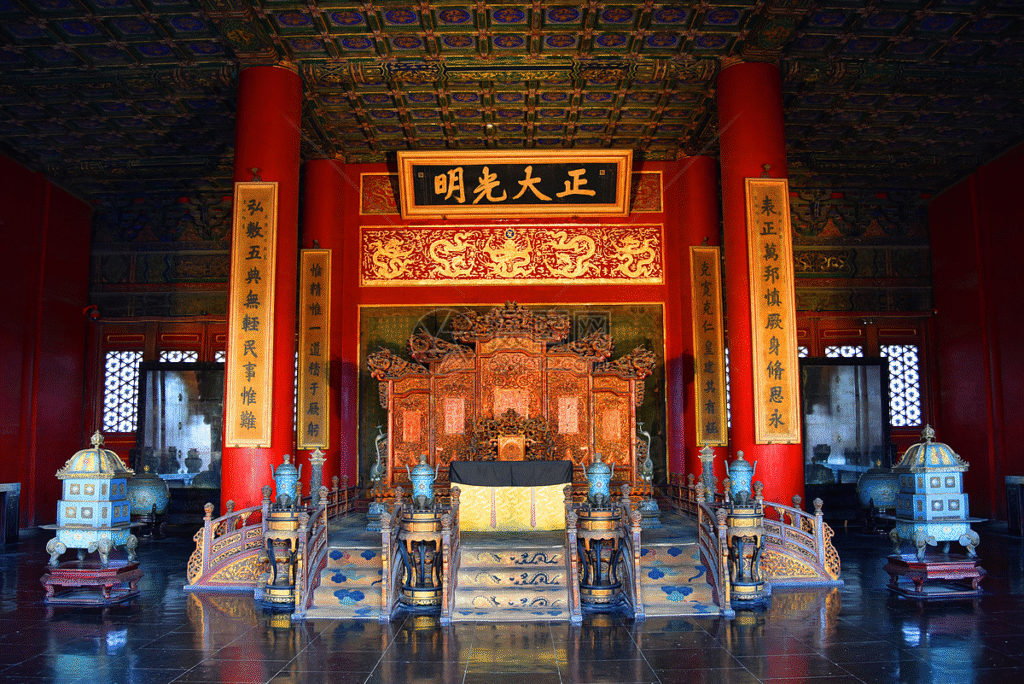
The hall was used for the most significant ceremonies of the empire, including imperial enthronements, royal weddings, investitures, and national celebrations such as the Lunar New Year and Winter Solstice. Architecturally, it stands as a testament to the pinnacle of traditional Chinese craftsmanship and imperial power.
Hall of Central Harmony (中和殿)
Situated between the Hall of Supreme Harmony and the Hall of Preserving Harmony, the Hall of Central Harmony is smaller in scale and served as a transitional space. Here, the emperor would rest, prepare for ceremonies, and meet briefly with officials prior to major events.

Its elegant and compact structure reflects the principle of harmony and balance in imperial architecture.
Hall of Preserving Harmony (保和殿)
The Hall of Preserving Harmony was primarily used for formal banquets and, during the later dynasties, for conducting the final stage of the imperial civil service examinations, known as the “Palace Examination” (殿试). This hall played a crucial role in the Confucian-based bureaucratic system, where successful scholars were selected to serve in the imperial administration.
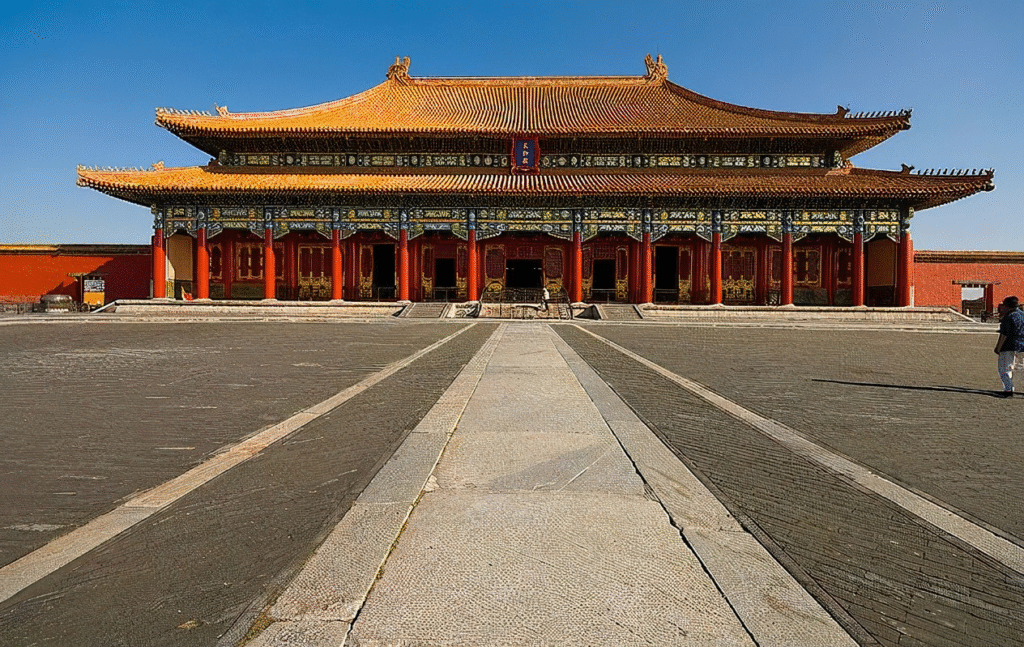
The spacious interior and solemn décor underscore its importance in both ceremonial and educational contexts.
the Inner Court of the Forbidden City
The Inner Court of the Forbidden City, located in the northern section of the palace complex, served as the living quarters for the emperor and his family, as well as the place where daily affairs and imperial rituals were conducted. This area not only reflects the private life and court etiquette of the emperor but also embodies traditional Chinese philosophical concepts such as the harmony between heaven and humanity, and the balance of yin and yang.
Palace of Heavenly Purity (Qianqing Palace)
The Palace of Heavenly Purity was the main residence of the Ming and Qing emperors. It functioned as both the emperor’s sleeping quarters and an important site for managing routine state affairs.

The interior is decorated with solemn and elegant designs, with the dragon throne symbolizing imperial authority. In the late Qing dynasty, although actual political power shifted away from the palace, Qianqing Palace remained a symbolic center of imperial sovereignty. The plaque inscribed with “Zheng Da Guang Ming” (“Upright and Honorable”) hangs prominently, symbolizing the emperor’s commitment to just and transparent governance.
Hall of Union (Jiaotai Hall)
Situated between the Palace of Heavenly Purity and the Palace of Earthly Tranquility, the Hall of Union is a small yet culturally significant building.

Its name signifies the unity of heaven and earth and the harmony of yin and yang, symbolizing the stability and balance of imperial power. The hall houses the imperial seals, which are vital symbols of the emperor’s authority. Despite its modest size, the hall holds profound political and cultural meaning.
Palace of Earthly Tranquility (Kunning Palace)
The Palace of Earthly Tranquility served as the residence of the empress and the venue for important ceremonies such as the empress’s wedding.

Its refined architectural layout and ornate decoration reflect the elevated status and respect accorded to the empress within the court. The palace was the center from which the empress managed inner court affairs, representing her authority and the honor of the imperial family. The palace also preserves numerous precious historical artifacts and court relics.
Imperial Garden
Located at the northern end of the Inner Court, the Imperial Garden was a private retreat for the emperor and empress. The garden features a carefully arranged landscape with rockeries, ponds, ancient trees, pavilions, and corridors, showcasing the style of traditional Jiangnan gardens.
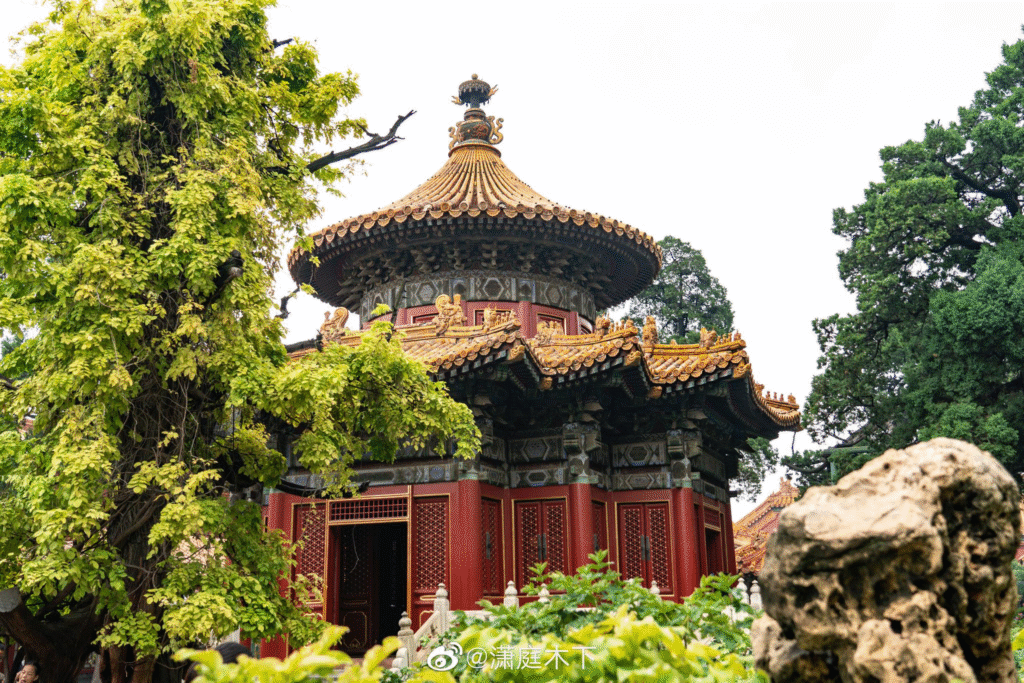
Beyond serving as a leisure space for the royal family, the garden was also a cultural haven for scholars and poets to compose poetry and paintings, embodying the essence of classical Chinese garden art. Its tranquil environment provided a place for reflection and retreat.
Visitor Information
Address:
The Forbidden City is located at No. 4 Jingshan Front Street, Dongcheng District, Beijing, China. It sits at the very heart of Beijing, adjacent to Tiananmen Square, making it easily accessible by public transportation and a central landmark for visitors.

Opening Days:
The Forbidden City is open every day except Mondays, when it is closed for maintenance and preservation work. This weekly closure helps protect the delicate historical structures and artifacts from excessive wear and tear caused by large visitor numbers.
Opening Hours:
- April 1 to October 31 (Peak Season): The palace complex opens at 8:30 AM and closes at 5:00 PM. The last ticket entry is allowed at 4:10 PM, ensuring visitors have sufficient time to explore before closing. This period corresponds to warmer months and public holidays when visitor traffic is highest.
- November 1 to March 31 (Off-Season): The opening hours are slightly shorter, from 8:30 AM to 4:30 PM, with last entry at 3:40 PM. The reduced hours allow for better preservation conditions during colder months and lower visitor density.
Ticket Price for Foreign Visitors:
- The standard admission fee for international tourists is approximately 60 Chinese Yuan (around 9 USD) during the peak season. This price grants access to the main exhibition halls and palace grounds.
- During the off-season, reduced ticket prices may be available, often around 40 CNY, depending on government policies and special promotions.
- Tickets can be purchased online in advance through the official Forbidden City website or authorized ticket platforms, which is highly recommended, especially during peak periods, to avoid long queues. On-site ticket counters are also available but may require waiting, especially on weekends and holidays.
Additional Tips:
- Visitors should arrive early in the morning to avoid the busiest hours, typically mid-morning to early afternoon.
- Photography is allowed in most areas, but flash photography and tripods are prohibited inside the halls to protect delicate artworks.
- Audio guides and guided tours are available for rent to enhance the visitor experience by providing detailed historical context and stories behind the architecture and artifacts.
- Comfortable walking shoes are recommended, as the Forbidden City covers approximately 720,000 square meters with uneven stone pathways.
conclusion
As a treasure of ancient Chinese imperial culture and architectural art, the Forbidden City not only witnessed five centuries of imperial power but also embodies rich historical memory and cultural significance. Whether strolling through the majestic palaces or admiring the exquisite imperial gardens, visitors can deeply appreciate the profound heritage of Chinese civilization. As an important destination for red tourism, the Forbidden City uniquely blends history and culture, inviting every visitor to explore and experience its wonders. Wishing you a fulfilling and enjoyable visit!
